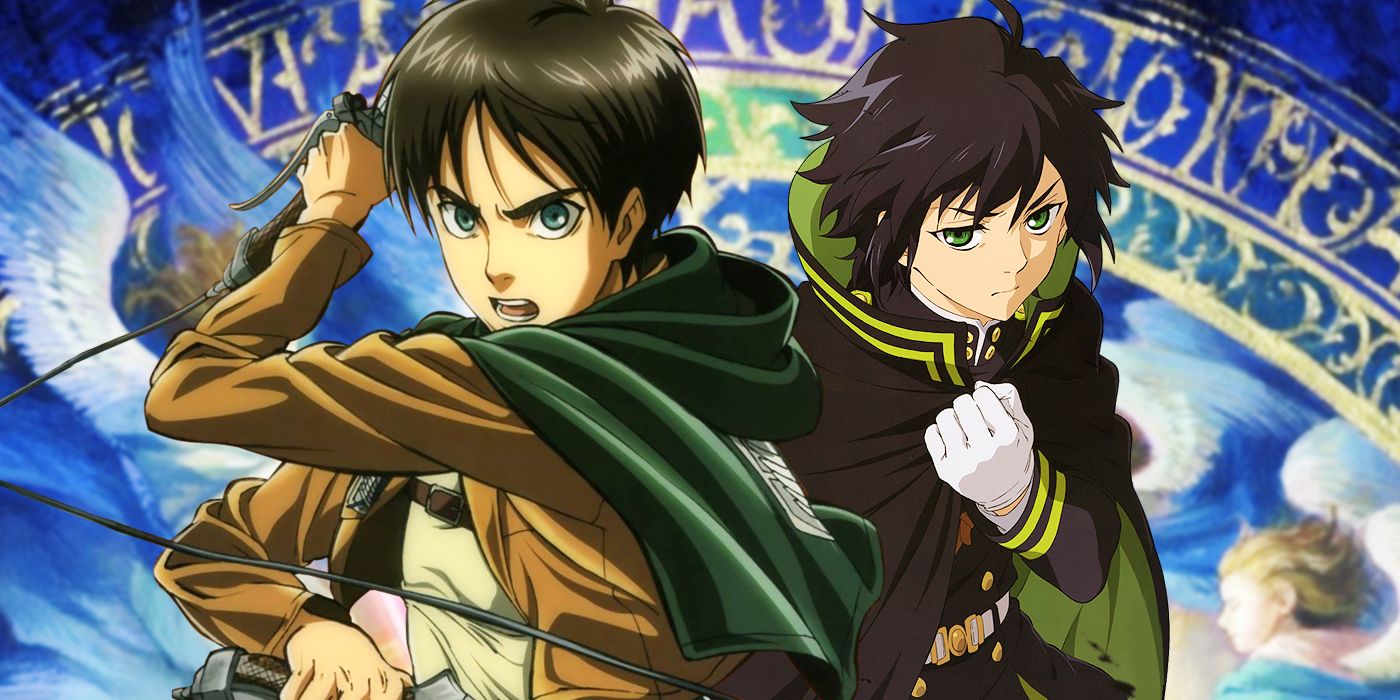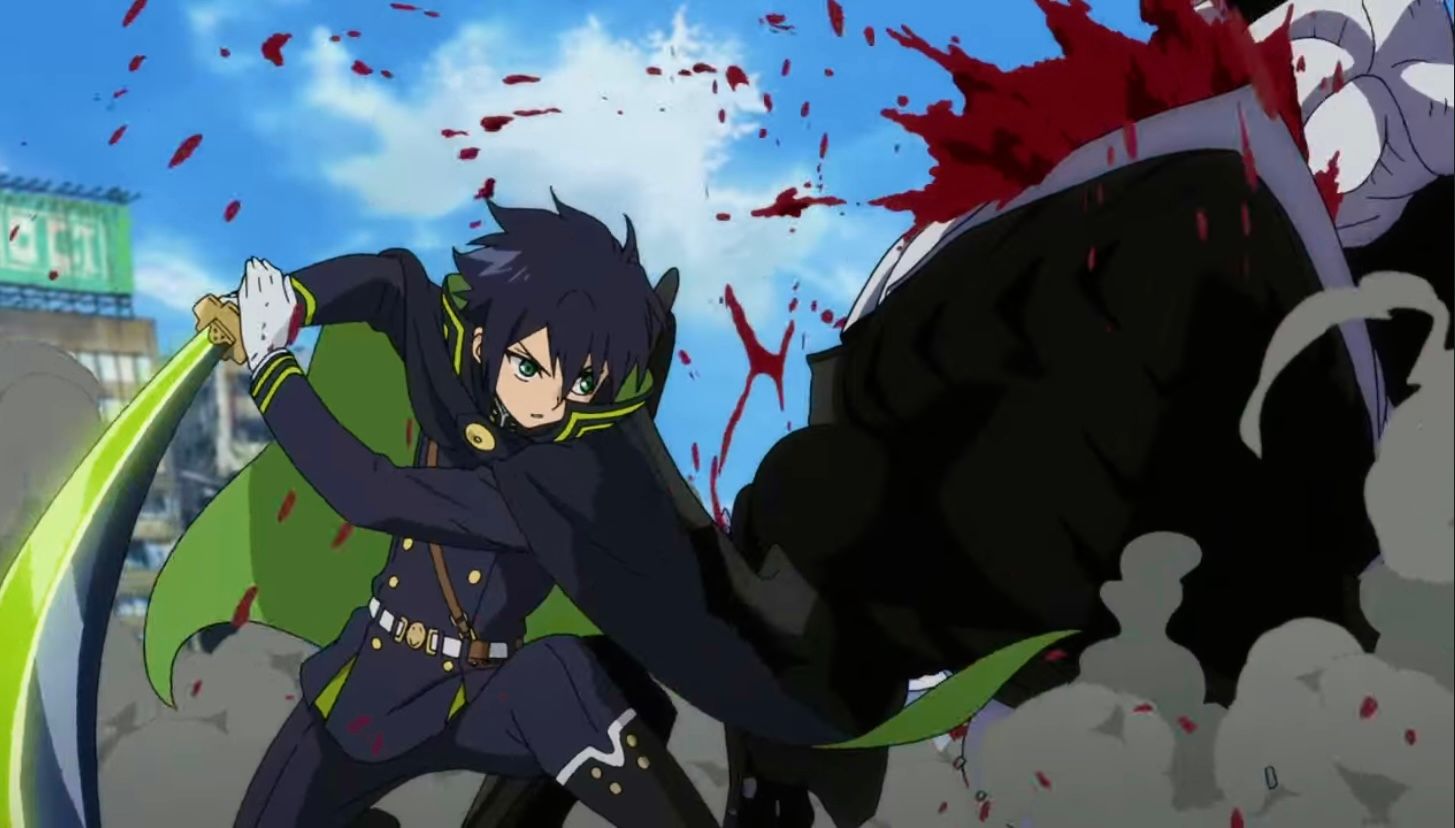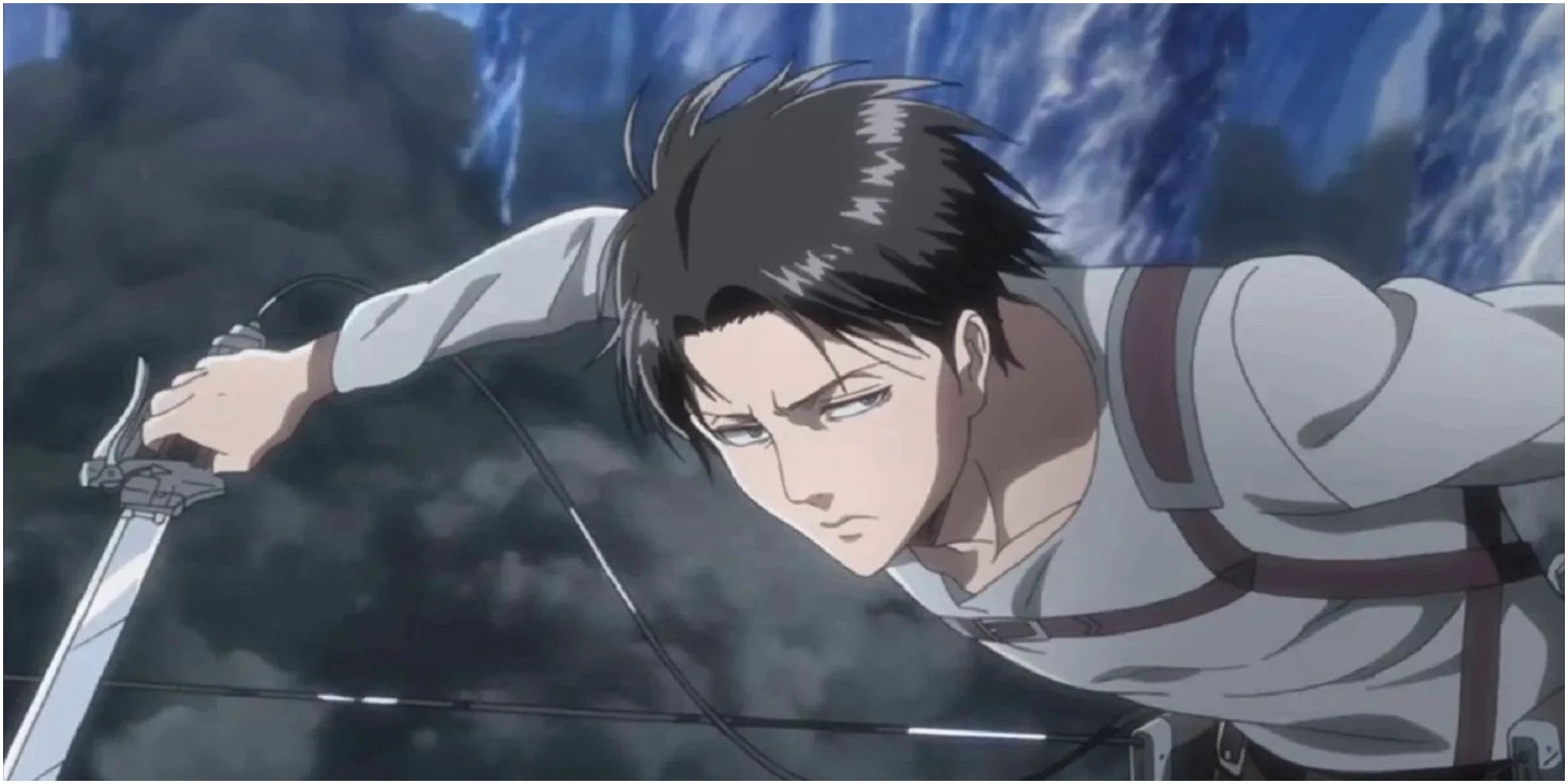The Big Picture
- Seraph of the End is a post-apocalyptic anime with vampires and a story similar to Attack on Titan, filled with revenge, survival, and sacrifice.
- The animation in Seraph of the End is on par with the first seasons of Attack on Titan, with great fight scenes and high movement moments, although the blood is less graphic.
- The characters in Seraph of the End share qualities with those in Attack on Titan, such as being driven by revenge and struggling with their monstrous sides.
After 10 long years, Attack on Titan has finally ended. It’s been a wild ride, hasn’t it? Attack on Titan is far more than an anime at this point — it’s a cultural phenomenon. Even people who aren’t into anime recognize it, and really, when The Simpsons has referenced something, that’s the peak, right? Not to mention all the awards it has won, from Animation of the Year at the Tokyo Anime Awards to Best Score at the Crunchyroll Anime Awards. However, it’s not accolades that have drawn audiences to Attack on Titan; it’s the characters, the story, and the animation that have captured hearts and kept viewers watching until the very end. And now, it’s over. How is a fan to fill the post-finale void? Well, the answer is pretty simple: watch a new anime. What anime? Why, Seraph of the End: Vampire Reign, of course!
Seraph of the End
In 2012, the world allegedly comes to an end at the hands of a human-made virus, ravaging the global populace and leaving only children untouched. It is at this time that vampires emerge from the recesses of the earth.
- Release Date
- April 4, 2015
- Cast
- Miyu Irino, Micah Solusod, Saori Hayami, Nobuhiko Okamoto
- Genres
- Anime, Action, Adventure
- Rating
- TV-14
- Seasons
- 3
What is ‘Seraph of the End’ About?
Like the first three seasons of Attack on Titan, Seraph of the End (or Owari no Seraph) is an anime from Wit Studio that takes place in a post-apocalyptic world. A virus kills everyone over the age of 13 and from this tragic epidemic rises vampires, who round up humans under the guise of protecting them and using them as blood donors. Orphans Mikaela (Kensho Ono) and Yūichirō (Miyu Irino) are among the captured survivors, and an angry Mikaela crafts a plan to escape their parasitic captors. Upon its failure, only Yūichirō remains alive, and is found by the Japanese Imperial Demon Army, whose goal is to exterminate all of the vampires in Japan. He joins the army in the hopes of killing the vampires that slaughtered his family, but things aren’t as simple as they once were when he reunites with an old friend. Now the question is: how does Seraph of the End fill the Attack on Titan-shaped hole in viewers’ hearts?
Wit Studio Animates ‘Attack on Titan’ and ‘Seraph of the End’
As previously mentioned, the first three seasons of Attack on Titan were animated by Wit Studio, which also animated 2015’s Seraph of the End. One of Attack on Titan’s strong points is animation, especially during action sequences, so of course, whatever you watch next needs to be up to par. Seraph of the End shares the great animation of the first few seasons of Attack on Titan, particularly during fight scenes and other high movement moments. Given that both series rely heavily on scenes of swordplay, this is a good thing. However, you won’t find that oh so strangely satisfying splatter of blood in Seraph of the End that is common in Attack on Titan; most of the blood in Seraph of the End is more fluid, often dripping or pooling.
It’s important to note that when Wit Studio was animating Attack on Titan, the series was more shounen-like, with brighter colors and less intense character designs than seen in the final season, which was animated by MAPPA. That more shounen-like animation and design is definitely seen in Seraph of the End, but it isn’t a bad thing. It’s still well done and fitting for the story, which is like if Blue Exorcist and Attack on Titan were thrown in a washer together on a setting that made their colors bleed. You get something with the neon hints and high action of a shounen with the drama and blood of something a tad more mature.
It’s also worth noting that both anime were scored by Hiroyuki Sawano. Sawano also scored Blue Exorcist, Promare, and Kill la Kill, and is no stranger to the dark fantasy genre, which is clear in his award-winning score for Attack on Titan. If Attack on Titan holds a special place due to music, Seraph of the End will provide a similar listening experience.
‘Attack on Titan’ and ‘Seraph of the End’ Share Similar Story Structure
There used to be a meme that circulated around anime circles that featured Attack on Titan’s Eren, Seraph of the End’s Yūichirō, and Blue Exorcist’s Rin that joked about how each of them pledged to wipe out their series’ monsters (titans, vampires, demons) and yet became those monsters they had to fight. It was just a silly little joke, but it had a good point about Attack on Titan and Seraph of the End sharing common themes and ideas.
Both series center around a young male protagonist — Eren and Yūichirō — that saw their loved ones killed by monsters and joined the military to fight them. Both series explore the idea of revenge and how it changes when monsters suddenly have a connection to a person. They both look at societies damaged by man-eating villains and feature swords as a weapon of choice; the list goes on and on. In many ways, Seraph of the End follows an incredibly similar story to Attack on Titan that asks what it means to be human and tells a tale of survival, resilience, and sacrifice.
Of course, Seraph of the End isn’t a carbon copy of Attack on Titan, either. Unlike Attack on Titan, which has a city walled off to defend itself from the titans, Seraph of the End features a world where vampires are already inside society and have taken advantage of weakness caused by mass death. Yūichirō is not inspired to think differently about vampires after becoming one; he is instead inspired by a friend he reunites with, who is a vampire. Eren, on the other hand, is more inspired to see the use of titans — at least, humans that can turn into titans — after becoming one himself. In this sense, Attack on Titan is more about internal conflict, while Seraph of the End is more about external conflict.
It should be noted that Seraph of the End may feel slightly slower than Attack on Titan at first. Its first season leans heavily on showing Yūichirō’s training and introducing characters and ideas that will get more development later in the series. In addition, while both series feature a lot of death, Seraph of the End places less emphasis on it than Attack on Titan does. However, both look at the impact of death and grief, as well as the feelings of being trapped, especially in one’s own body.
‘Seraph of the End’ and ‘Attack on Titan’s Supporting Casts Boast Similar Qualities
As previously mentioned, Eren and Yūichirō have many similarities as protagonists. They are both driven by revenge, loud and brash (at least at the beginning of their series), and they both struggle with their monstrous sides. However, there are plenty of other character comparisons to be made. One is between Attack on Titan’s Levi and Seraph of the End’s Guren. Both are the captains of their unit and known for being rather blunt, hard on their underlings, and totally badass. While Guren admittedly often lacks the weirdly elegant air of Levi, they do have similar goals and relationships with their respective protagonists. There is also Mikasa and Mikaela, who are arguably the people closest to their series’ protagonist, as Mikasa is a protector to Eren and Mikaela shares a similar role when it comes to Yūichirō.
Some will point out that Seraph of the End may not be exactly on par with Attack on Titan due to it being a bit less concerned about finding the truth about villains in the plot and having less impressive animation by today’s standards. These are no doubt valid points. However, Seraph of the End truly works on the “similar but different” argument; it’s like Attack on Titan, but it isn’t Attack on Titan. And that’s a good thing! If it bothers a viewer that it’s not the exact same, it might be better to rewatch Attack on Titan. However, it’s a good transitional anime to bridge the gap between Attack on Titan and all the new anime you can grow to love now that it’s over by providing similar themes, characters, and design.
Seraph of the End (Owari no Seraph) is available to stream on Hulu in the U.S.
Denial of responsibility! TechCodex is an automatic aggregator of the all world’s media. In each content, the hyperlink to the primary source is specified. All trademarks belong to their rightful owners, and all materials to their authors. For any complaint, please reach us at – [email protected]. We will take necessary action within 24 hours.
Khushi Patel is a science fiction author who lives in Austin, Texas. She has published three novels, and her work has been praised for its originality and imagination. Khushi is a graduate of Rice University, and she has worked as a software engineer. She is a member of the Science Fiction Writers of America, and her books have been nominated for several awards.




